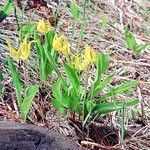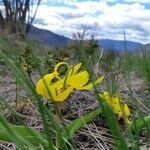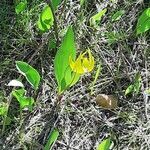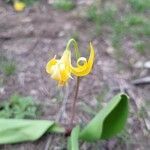A bulb plant. It is a small herb which keeps growing from year to year. It grows 10-40 cm high. There are usually 2 leaves from the base of the stem. The leaves are not mottled. They are narrow oval and have a sharp point. They are 10-20 cm long. The flowers are golden yellow. They occur as 1-2 flowers that hang down on a slender stalk. Each flower is about 2-5 cm long. The fruit is a dry triangle shaped capsule with many seeds.




